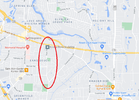Had to go to the Dentist this morning and I did look for the brake lights action. At traffic red lights 4 lanes with two left turn and one right turn lane showed all cars and trucks with lit up brake lights. I saw the car in front of me in the left turn lane inch forward and when his lights went out I began to creep too as he drifted forward to tighten his gap. Then the center lane got the green and began to move and when their tail lights went out I didn't move. Seems to work as it should at the traffic light.
Traveling down the road 3 lanes with me in the center doing the 45mph speed limit a car in the right lane just ahead slowed down with brake lights. FSD-beta slammed on the brakes when that happened for no reason as the car to the right was not in my lane or trying to get in my lane. Later I saw a 6 wheel truck speeding faster in the left lane and then he spotted a police car way up ahead. he hit his brakes and again FSD beta slammed on the brakes for no reason. Good there were no cars tail gating me.
Still it is pretty cool seeing the other cars brake lights across all 4 lanes at a traffic red light.
On this trip FSD-beta attempted to run a red light and I had to hit the brakes. The light was yellow for about 10 seconds away and if the Yellow would have been on for 15 seconds it wouldn't have been a problem but the light turned red when I was about 50 ft away. My hard braking had me stopped in good time.
Finally, my NOA had me making a right turn at the next light with a right turn lane and the Nav announcement came on but FSD-beta ignored the opportunity to get in the right turn lane until traffic was too late. Missed the turn and had to go to the next block to get back on my route.
I’ll have to look at this too. I’d be a little surprised if they were actually using this since the specificity of brake light detection is pretty low (false positive rate seems to be near 100% over a large enough interval of time). However, can’t argue with the results - they’re about what you would expect if they were using it.
It just seems very difficult to distinguish between the car detecting & responding to a speed change in the lead vehicle (which it must do quite accurately even with no brake lights showing), and it detecting and responding to brake lights.
OK, now that you guys are primed with scenario 1 (seeing if your car immediately slows down when it "sees" brake lights on the preceding car), let's move on to scenario 2.

Quite a few guys have reported that their cars will inappropriately attempt to go around traffic in front of them that is stopped at a traffic light.
So I've been specifically watching for this behavior quite a bit, and have another observation for you guys to try out if you're up for it.
Normally, when you're stopped behind a vehicle stopped at a traffic light, the preceding car will have its brake lights on. In my experience so far, as long as that condition is met (preceding car showing brake lights) my car won't attempt to go around them. At least, most of the time it won't.
But if the preceding car's brake lights go out, within just a few seconds, my car will reclassify them as a "Parked Vehicle" and attempt to go around them.
Unfortunately, this isn't an always repeatable thing... sometimes my car will attempt to go around cars that do have brake lights on, but it is quite repeatable in that 90% of the time my car will attempt to go around them shortly after their brake lights go out (assuming that they don't then start moving forward).
I did have quite a few different things saved with TeslaCam, but unfortunately that USB drive gave up the ghost on me, so I'm back to square one. Although my new iPhone mount just arrived, so hopefully I'll be able to record a few of these scenarios for you guys to look at.
It would be so much easier to say, "hey, let this ten second clip explain the scenario" than expect you guys to read paragraphs of highly entertaining "so I'm stopped at a traffic light, three lanes one direction, a turning lane, a VRU to the right...." *snore*.



